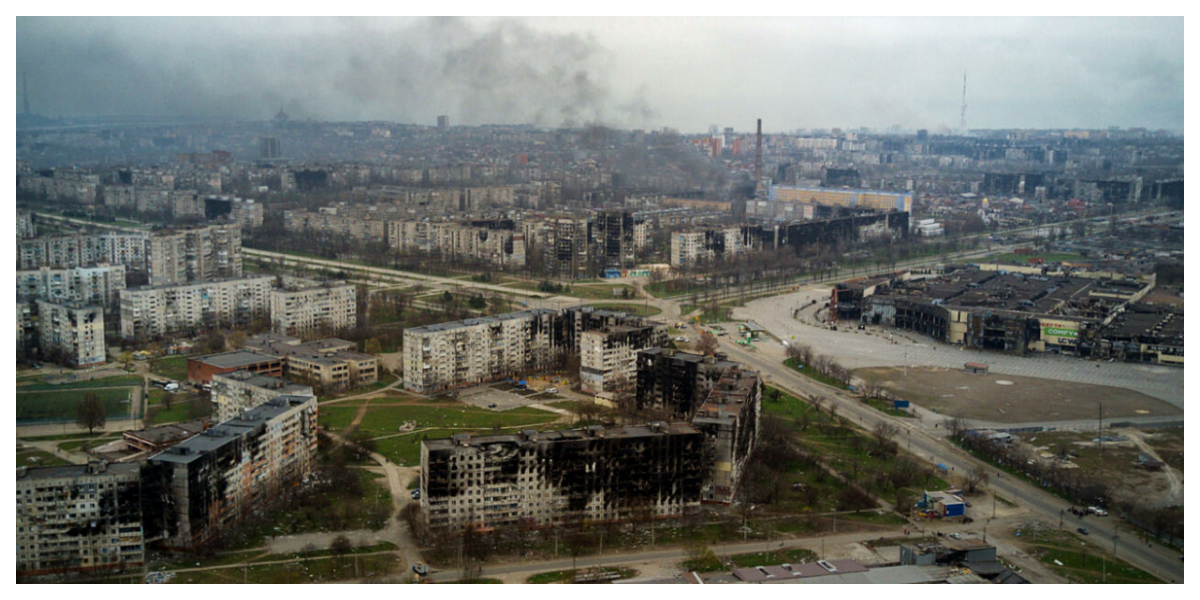PARIS: As Russian forces close in on the southern Ukrainian port city of Mariupol, a small group of resistance fighters hopes to slow them down by using a tunnel system beneath a vast industrial complex as a base.
Experts believe that the city, which is viewed as crucial to Russian preparations to invade eastern Ukraine, will be overrun by the Russians.
But the defenders of the Sea of Azov port intend to make it as difficult as possible for the invaders to take it.
Urban warfare in Ukraine appears practically tailor-made for guerilla warfare because of the extensive rail lines, warehouses, coal furnaces, industries, chimneys, and a network of tunnels.
One of Ukraine’s wealthiest men is behind Metinvest, which owns a metal works complex called Azovstal, which is controlled by Rinat Akhmetov.
Like the adjoining Azovmash complex, which produces rail components, cranes, and other huge metal structures, it is a focal point of urban conflict in Mariupol.
Separatist leader Eduard Basurin described “it’s a city within a city” when asked about the situation in the eastern Donetsk region.
“There are several underground levels that date back to Soviet times which you can’t bombard from above. You have to go underground to clean them out, and that will take time.”
According to Alexander Grinberg, an analyst at the Jerusalem Institute for Strategy and Security, Russian troops would find it nearly impossible to enter the tunnels.
‘They can try’
“They can try, but they’ll be slaughtered because the defenders of the tunnel will absolutely have the tactical upper hand,” he told AFP.
Fighters have used tunnel systems to great effect in the past to combat superior forces.
The Viet Cong used the vast Cu Chi tunnel system near Saigon as a base for attacks on US troops, and Hamas has used tunnels in its fight against Israel’s army.
The Islamic State group’s tunnel system in Mosul, Iraq, enabled its fighters to surprise American troops with unexpected appearances.
The most memorable example, however, is from World War II and the Battle of Stalingrad, which featured fierce fighting in the Red October industrial complex.
“The Soviets used underground passages, sewers and tunnels to get behind German lines,” a French military source told AFP.
According to the source, a sapper unit discovered a former factory used by German troops, stacked three tonnes of explosives beneath it, and blew up the entire complex, burying the Germans in the rubble.
‘Inherent dangers’
“The enclosed spaces mean engagements occur at shorter ranges, limiting the effectiveness of some small arms,” he said.
He also stated that close-range weapon use carries “a significant risk of tunnel collapse and inherent dangers to the forces employing them.”
Furthermore, he said, commanding troops underground is difficult because standard communications do not work well and tunnel networks are not always well mapped.
The evacuation of wounded soldiers is also time-consuming, according to Rands.
Despite all of the advantages for the defenders, analysts believe the tunnel network could still be taken if the Ukrainians lack key equipment in sufficient quantities, such as night-vision equipment.
It may also be difficult to counter the Russians’ potential use of large amounts of water to flood the tunnels, or of gas or chemical products to force the Ukrainians to the surface.
Although Russian President Vladimir Putin stated on Tuesday that Russia is conducting its Ukraine operation “calmly,” there is a chance that the tunnel wars will be anything but calm – and will last for quite some time.
[embedpost slug=”/ukraines-zelenskyy-demands-an-african-union-address/”]

















